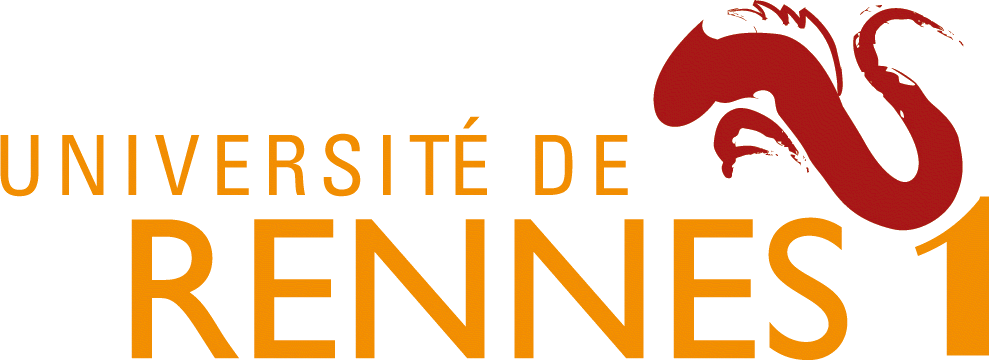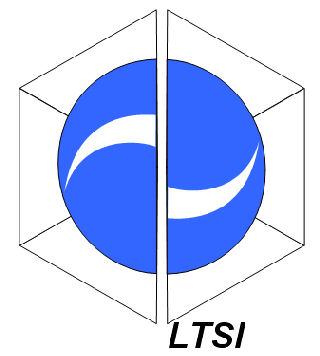News
Members
Publications
Software / Data
Job offers
Images / Videos
Collaborations
Conferences
Lab meetings: "Les partages de midi"
Practical information
Members Area
Next conferences we are in …


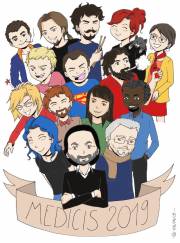
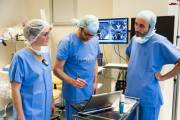
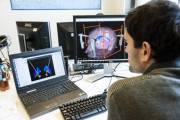
This shows you the differences between two versions of the page.
| Next revision | Previous revision | ||
|
presentation:applications [2009/09/23 10:47] aabadie créée |
presentation:applications [2010/03/19 15:07] aabadie |
||
|---|---|---|---|
| Line 4: | Line 4: | ||
| ===== Neuroimaging ===== | ===== Neuroimaging ===== | ||
| + | {{ :brain_10.png?200|}} | ||
| One objective of research in neuroimaging is the construction of anatomical and functional cerebral maps under normal and pathological conditions. Many researches are currently performed to find correlations between anatomical structures, essentially sulci and gyri, where neuronal activation takes place, and cerebral functions, as assessed by recordings obtained by the means of various neuroimaging modalities, such as PET (Positron Emission Tomography), fMRI (Functional Magnetic Resonance Imaging), EEG (Electro-EncephaloGraphy) and MEG (Magneto- EncephaloGraphy). Then, a central problem inherent to the formation of such maps is to put together recordings obtained from different modalities and from different subjects. This mapping can be greatly facilitated by the use of MR anatomical brain scans with high spatial resolution that allows a proper visualization of fine anatomical structures (sulci and gyri). Recent improvements in image processing techniques, such as segmentation, registration, delineation of the cortical ribbon, modeling of anatomical structures and multi-modality fusion, make possible this ambitious goal in neuroimaging. This problem is very rich in term of applications since both clinical and neuroscience application share similar problems. Because this domain is very generic by nature, our major contributions will be directed toward clinical needs even though our work can address some specific aspects related to the neuroscience domain. | One objective of research in neuroimaging is the construction of anatomical and functional cerebral maps under normal and pathological conditions. Many researches are currently performed to find correlations between anatomical structures, essentially sulci and gyri, where neuronal activation takes place, and cerebral functions, as assessed by recordings obtained by the means of various neuroimaging modalities, such as PET (Positron Emission Tomography), fMRI (Functional Magnetic Resonance Imaging), EEG (Electro-EncephaloGraphy) and MEG (Magneto- EncephaloGraphy). Then, a central problem inherent to the formation of such maps is to put together recordings obtained from different modalities and from different subjects. This mapping can be greatly facilitated by the use of MR anatomical brain scans with high spatial resolution that allows a proper visualization of fine anatomical structures (sulci and gyri). Recent improvements in image processing techniques, such as segmentation, registration, delineation of the cortical ribbon, modeling of anatomical structures and multi-modality fusion, make possible this ambitious goal in neuroimaging. This problem is very rich in term of applications since both clinical and neuroscience application share similar problems. Because this domain is very generic by nature, our major contributions will be directed toward clinical needs even though our work can address some specific aspects related to the neuroscience domain. | ||
| Line 20: | Line 20: | ||
| ===== Image guided intervention ===== | ===== Image guided intervention ===== | ||
| + | {{ :members:aabadie:ignsplanner.png?300|}} | ||
| The major objective within this application domain will be to develop systems using surgical guidance tools and real-time imagery in the interventional theatre. This imagery can come from video (using augmented reality procedures), echography or even MRI or thermal imagery for the future. This application domain will be covered with tight collaboration with Pierre Jannin from IDM Laboratory, and will find local support with for instance the Neurosurgery Dept., Pontchaillou Hosp. where X. Morandi (PU-PH) spent a year in Montreal working in this field. On the methodological side, we will continue our collaboration on the augmented reality topic with the Lagadic Team. | The major objective within this application domain will be to develop systems using surgical guidance tools and real-time imagery in the interventional theatre. This imagery can come from video (using augmented reality procedures), echography or even MRI or thermal imagery for the future. This application domain will be covered with tight collaboration with Pierre Jannin from IDM Laboratory, and will find local support with for instance the Neurosurgery Dept., Pontchaillou Hosp. where X. Morandi (PU-PH) spent a year in Montreal working in this field. On the methodological side, we will continue our collaboration on the augmented reality topic with the Lagadic Team. | ||
| - | |||
| - | {{ :visages:carotid_light.gif|}} | ||
| ===== Per-operative imaging in neurosurgery ===== | ===== Per-operative imaging in neurosurgery ===== | ||
| Line 30: | Line 28: | ||
| ===== Robotics for 3D echography ===== | ===== Robotics for 3D echography ===== | ||
| + | {{ :visages:carotid_light.gif|}} | ||
| This project will be conducted jointly with the Lagadic project. The goal is to use active vision concepts in order to control the trajectory of a robot based on the contents of echographic images and video frames (taken from the acquisition theatre). Possible applications are the acquisition of echographic data between two remote sites (the patient is away from the referent clinician) or the monitoring of interventional procedure like biopsy or selective catheterisms. This is a very challenging topic and we will work in collaboration with local clinical partners (P. Darnault, PUPH) and others (e.g. F. Tranquart and L. Pourcelot from INSERM Tours or the Robarts Research Institute at UWO, London, ON, Canada). | This project will be conducted jointly with the Lagadic project. The goal is to use active vision concepts in order to control the trajectory of a robot based on the contents of echographic images and video frames (taken from the acquisition theatre). Possible applications are the acquisition of echographic data between two remote sites (the patient is away from the referent clinician) or the monitoring of interventional procedure like biopsy or selective catheterisms. This is a very challenging topic and we will work in collaboration with local clinical partners (P. Darnault, PUPH) and others (e.g. F. Tranquart and L. Pourcelot from INSERM Tours or the Robarts Research Institute at UWO, London, ON, Canada). | ||
| Line 36: | Line 34: | ||
| The major objective within this application domain is to develop efficient and automatic procedures to allow the clinician to use conventional echography to acquire 3D ultrasound and to propose calibrated quantification tools for quantitative analysis and fusion procedures. This will be used to extend the scope of view of an examination. This will also be developed in collaboration with local clinical partners (P. Darnault, PU-PH and C. Treguier, PH). | The major objective within this application domain is to develop efficient and automatic procedures to allow the clinician to use conventional echography to acquire 3D ultrasound and to propose calibrated quantification tools for quantitative analysis and fusion procedures. This will be used to extend the scope of view of an examination. This will also be developed in collaboration with local clinical partners (P. Darnault, PU-PH and C. Treguier, PH). | ||
| - | |||
| - | |||

